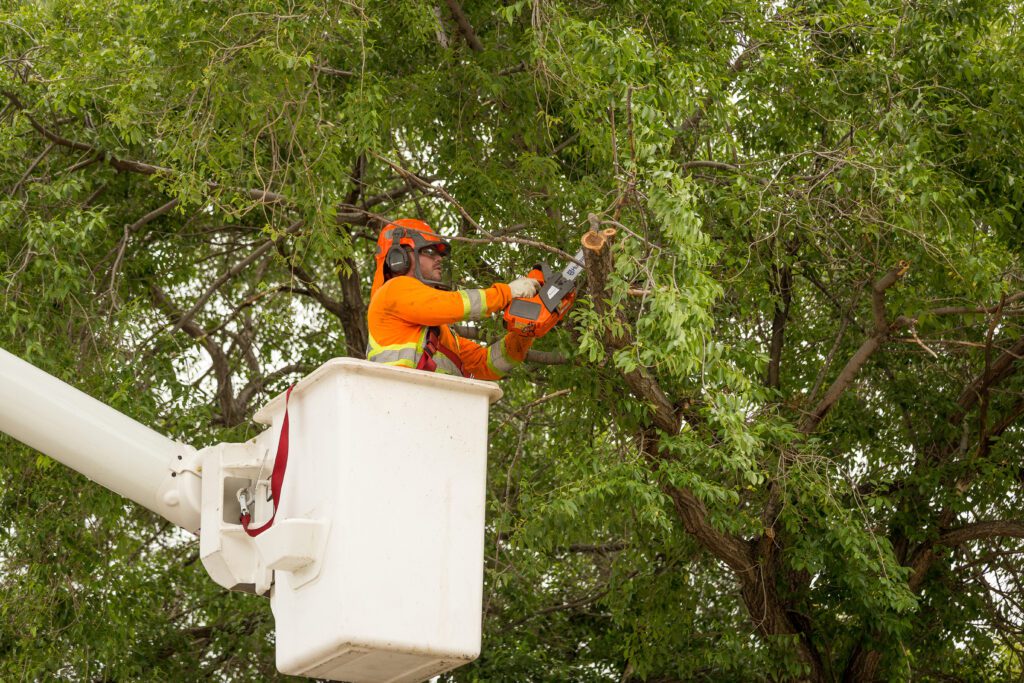


Tree trimming is one of the most valuable yet often overlooked aspects of home maintenance. While most homeowners think of it as a cosmetic task, regular trimming offers a wide range of benefits—from enhancing your property's curb appeal to improving the overall health and longevity of your trees. If you're looking to boost your landscape’s beauty and keep your trees thriving, here's why professional tree trimming is an essential part of your plan.
First impressions matter—and unkempt trees can quickly bring down the look of your entire property. Overgrown branches, dead limbs, and misshapen growth detract from your landscape's design.
Benefits of Trimming for Curb Appeal:
Whether you’re preparing to sell your home or just want a more polished look, regular tree trimming makes a noticeable difference.
Trimming removes dead, diseased, or damaged branches that can hinder a tree’s growth. It also allows sunlight and airflow to reach the inner branches and lower canopy, which promotes better overall health.
How It Helps:
Healthy trees not only live longer—they look better and require less maintenance in the long run.
Dead or overgrown branches can become serious hazards, especially during storms or high winds. Regular trimming reduces the risk of falling limbs, protecting your home, family, and neighbors.
Common Risks Tree Trimming Prevents:
Keeping your trees trimmed is one of the simplest ways to maintain a safe outdoor environment.
When branches grow too close to your home, driveway, or fences, they can cause damage over time. Trimming ensures that trees grow in the right direction without encroaching on important structures.
Examples of Protection:
A dense tree canopy can block out natural sunlight and limit airflow in your yard. Trimming thins out excess growth, creating a lighter, more open space.
Why It Matters:
Light, airy outdoor spaces are more enjoyable and visually pleasing.
Left untrimmed, trees may grow lopsided or develop weak branches. Professional trimming maintains the desired shape and encourages a stable, balanced structure.
Key Benefits:
For decorative trees, consistent shaping is essential to preserving their character and charm.
Landscaping plays a major role in real estate value—and healthy, well-maintained trees are a huge part of that equation. A yard with professionally trimmed trees signals that a property is cared for and attractive.
Did You Know?
Mature trees can increase property value by up to 15%, especially when they’re healthy and well-groomed.

Here are the most common questions client’s usually have for us. Still have more questions? Contact Us.
Yes, we offer emergency tree removal services for situations such as storm damage, fallen trees, or hazardous trees posing an immediate risk. Contact us at [phone number] as soon as possible in case of emergencies, and our team will prioritize your situation.
We can assist you with the process of obtaining permits for tree removal, if required. The need for permits varies based on local regulations and tree preservation ordinances. Our team will guide you through the necessary steps and provide any documentation or information needed for the permit application.
While trees are generally low-maintenance, certain signs indicate the need for professional intervention. Watch out for symptoms such as extensive dead or dying branches, sudden leaf loss, significant pest infestation, leaning or unstable tree structure, or visible signs of disease or decay. If you notice any of these issues, it's best to consult with our skilled arborists.
Several signs indicate that a tree may need to be removed, including significant structural damage, extensive disease or pest infestation, severe leaning, extensive root damage, or proximity to power lines or structures. Our professional arborists can assess the tree's health and safety to determine if removal is necessary.
The frequency of tree trimming or pruning depends on various factors such as tree species, age, and overall health. As a general guideline, it is recommended to have trees pruned every 3-5 years to maintain their shape, promote healthy growth, and remove any hazardous or dead branches.
The ideal time to plant new trees depends on the tree species and climate. In general, spring and fall are the preferred seasons for tree planting as the weather conditions are more favorable for root establishment. However, it's best to consult with our experts who can provide guidance based on your specific location and tree species.

Can’t find the answer you’re looking for? Please chat with our friendly team.



